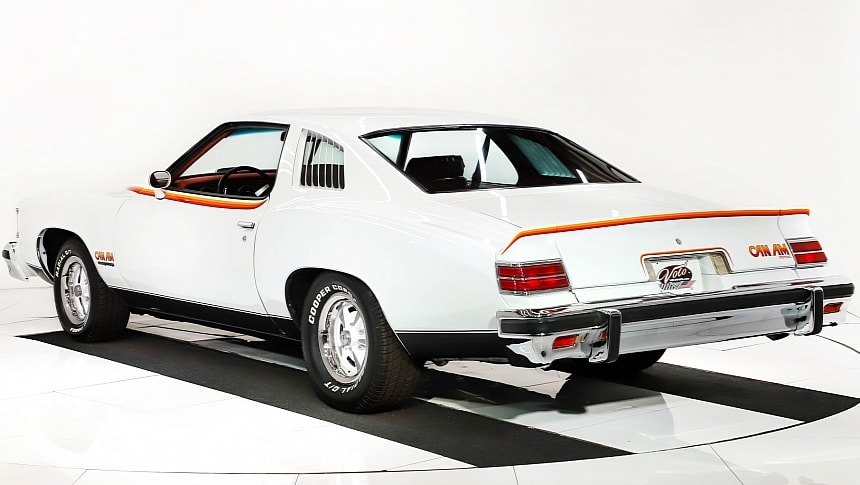What's the first car you think of when you hear the name Pontiac? It's the GTO, right? Well, that makes a lot of sense because it's the brand's most celebrated nameplate. Despite the fact that it was rather short-lived.
Introduced for the 1964 model year, the GTO went into the history books in 1974, a couple of years after the Big Three began phasing out high-compression V8 engines. For reference, nameplates like the Bonneville and Grand Prix have been around for more than 40 years.
But these full-size rigs did not reinvent the wheel. The GTO, on the other hand, helped popularize the muscle car segment. And that's big enough to keep the GTO name extremely relevant more than 50 years after it was discontinued (yup, I'm not including the modern Holden-based revival).
According to many enthusiasts, the true midsize GTO hit the end of the line in 1972. The 1973 version wasn't well received by the public, while the 1974 iteration was based on the Ventura compact. All told, the general consensus is that the golden muscle car era started and ended with the Pontiac GTO.
However, the GTO wasn't the end of the line for high-performance Pontiacs. Sure, midsize rigs were decidedly underpowered compared to their 1960s counterparts during the Malaise Era, but the Big Three did release a few interesting vehicles. The Pontiac Can Am is one of them.
The brainchild of Jim Wangers, Pontiac's chief marketing manager, the Can Am was created to revive the spirit of the iconic GTO. And it was also based on the LeMans. Named after the Canadian-American (Can-Am) racing series, the Poncho arrived in showrooms with louvered quarter windows, a ducktail rear spoiler, a shaker hood scoop from the Trans Am, and tri-tone stripes in orange, yellow, and gold.
The striking look was backed by a beefed-up version of Pontiac's W72 V8 engine. The 400-cubic-inch (6.6-liter) mill produced 200 horsepower, 20 more than the similar unit offered in the LeMans Sport Coupe. It wasn't much compared to the golden era, but the Can Am was among the most potent rigs of its time. Pontiac also installed the Oldsmobile 403-cubic-inch V8 (185 horsepower) in a few cars.
Introduced in 1977, the Can Am did not make it beyond that model year. With the LeMans set to be redesigned for 1978, the Can Am spent only six months on the assembly line. Pontiac sold 1,377 units. The superb example you see here is one of those cars.
Restored to factory specifications, this Can Am looks spotless inside and out. It has less than 22,000 miles (35,406 km) on the odometer, a numbers-matching engine, and all the goodies that came with the badge in 1977. If you're into late-1970s coupes with decent power, this Can Am carries an $82,998 sticker. It's not cheap, but it's one of a handful of Can Ams that look better than new.
But these full-size rigs did not reinvent the wheel. The GTO, on the other hand, helped popularize the muscle car segment. And that's big enough to keep the GTO name extremely relevant more than 50 years after it was discontinued (yup, I'm not including the modern Holden-based revival).
According to many enthusiasts, the true midsize GTO hit the end of the line in 1972. The 1973 version wasn't well received by the public, while the 1974 iteration was based on the Ventura compact. All told, the general consensus is that the golden muscle car era started and ended with the Pontiac GTO.
However, the GTO wasn't the end of the line for high-performance Pontiacs. Sure, midsize rigs were decidedly underpowered compared to their 1960s counterparts during the Malaise Era, but the Big Three did release a few interesting vehicles. The Pontiac Can Am is one of them.
The brainchild of Jim Wangers, Pontiac's chief marketing manager, the Can Am was created to revive the spirit of the iconic GTO. And it was also based on the LeMans. Named after the Canadian-American (Can-Am) racing series, the Poncho arrived in showrooms with louvered quarter windows, a ducktail rear spoiler, a shaker hood scoop from the Trans Am, and tri-tone stripes in orange, yellow, and gold.
The striking look was backed by a beefed-up version of Pontiac's W72 V8 engine. The 400-cubic-inch (6.6-liter) mill produced 200 horsepower, 20 more than the similar unit offered in the LeMans Sport Coupe. It wasn't much compared to the golden era, but the Can Am was among the most potent rigs of its time. Pontiac also installed the Oldsmobile 403-cubic-inch V8 (185 horsepower) in a few cars.
Introduced in 1977, the Can Am did not make it beyond that model year. With the LeMans set to be redesigned for 1978, the Can Am spent only six months on the assembly line. Pontiac sold 1,377 units. The superb example you see here is one of those cars.
Restored to factory specifications, this Can Am looks spotless inside and out. It has less than 22,000 miles (35,406 km) on the odometer, a numbers-matching engine, and all the goodies that came with the badge in 1977. If you're into late-1970s coupes with decent power, this Can Am carries an $82,998 sticker. It's not cheap, but it's one of a handful of Can Ams that look better than new.















